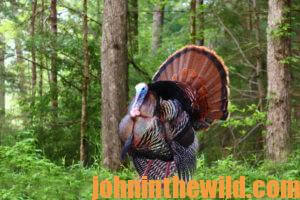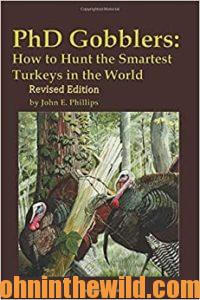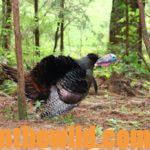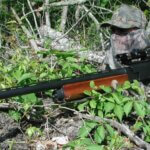Editor’s Note: With turkey-hunting season starting March 6, 2021, in Florida, March 15 in Mississippi, and March 20, 2021 in other southern states and continuing in South Carolina until May 10, Texas until May 16, and many northern states like New York and Minnesota and western states such as Washington, Wyoming and South Dakota until May 31, 2021, you need to get ready for turkey season now. The key to taking a gobbler is not your calling ability, your camo, the power of your shotgun or the number of turkeys on the property. To bag the toughest toms, you must know what a turkey is planning to do before he does it. One of the greatest turkey hunters who ever lived was “Uncle Roy” Moorer of Evergreen, Alabama. When I met Uncle Roy many years ago before he passed away, he gave me the secret to bagging even the toughest of toms. “All you’ve got to do to take any turkey, no matter how tough he is to hunt, is know where that turkey wants to go, get there before he does and let him come to you.” Uncle Roy’s nephew told me, “The reason Uncle Roy has been able to bag over 500 turkeys in his lifetime was because he always knew what a turkey would do even before the bird knew.” To take tough toms, you’ve got to understand the mind of the turkey.
 Larry Norton of Butler, Alabama, a champion turkey caller and hunting guide, deals with tough toms regularly. “One of the hardest turkeys to call is a bird that hangs-up and struts and drums 50 to 60 yards from you but won’t come in to where you are,” Norton reports. “Often hunters don’t realize turkeys make more sounds than gobbling, yelping, cutting, cackling and purring. When the box call, the slate call or the diaphragm call don’t bring a tom to within gun range, I resort to using what I call turkey sounds.
Larry Norton of Butler, Alabama, a champion turkey caller and hunting guide, deals with tough toms regularly. “One of the hardest turkeys to call is a bird that hangs-up and struts and drums 50 to 60 yards from you but won’t come in to where you are,” Norton reports. “Often hunters don’t realize turkeys make more sounds than gobbling, yelping, cutting, cackling and purring. When the box call, the slate call or the diaphragm call don’t bring a tom to within gun range, I resort to using what I call turkey sounds.
“I’ll scratch in the leaves like a hen and keep in mind that hen turkeys have a definite cadence to their scratching. They scratch two times, pause and then scratch one more time. Often this sound will bring a turkey in because he’s already heard the hen call. However, if he doesn’t hear her scratching or moving in the leaves, he will be suspicious and often will hang-up. By scratching in the leaves, you can reassure the tom a hen is where he has heard the calling. Another tactic I use is to give a drumming sound like another gobbler with my natural voice. Many times when scratching in the leaves won’t pull a tom in, the drumming sound will.
 “If neither of those techniques work, I’ll let the turkey walk off and move to another spot to try and call him. Oftentimes a turkey hangs-up because he’s been shot at or attacked by a predator in the place to which you’re trying to call him. When you change locations, you can call him to a site where he’s not afraid. I change calls when I attempt to call a gobbler from a second calling spot. Sometimes you’ll have to change locations two or three times to find an area where turkey will come. But when I’m really having a tough time with a turkey, I usually will use a turkey call to try and bring in a tom.”
“If neither of those techniques work, I’ll let the turkey walk off and move to another spot to try and call him. Oftentimes a turkey hangs-up because he’s been shot at or attacked by a predator in the place to which you’re trying to call him. When you change locations, you can call him to a site where he’s not afraid. I change calls when I attempt to call a gobbler from a second calling spot. Sometimes you’ll have to change locations two or three times to find an area where turkey will come. But when I’m really having a tough time with a turkey, I usually will use a turkey call to try and bring in a tom.”
 Almost any turkey hunter can walk into the woods, hear a turkey gobble, sit down next to a tree, make a few calls and get the turkey to come to him. To learn to be a master turkey hunter, you must test these tough tom strategies against some of the smartest birds in the woods. What these hunters have learned can save you years of trial and error hunting.
Almost any turkey hunter can walk into the woods, hear a turkey gobble, sit down next to a tree, make a few calls and get the turkey to come to him. To learn to be a master turkey hunter, you must test these tough tom strategies against some of the smartest birds in the woods. What these hunters have learned can save you years of trial and error hunting.
 To learn more about turkey hunting, check out John E. Phillips’s latest Audible book, “PhD Gobblers: How to Hunt the Smartest Turkeys in the World, Revised Edition” at https://www.amazon.com/PhD-Gobblers-Smartest-Turkeys-World-ebook/dp/B083V83RLG, available in Kindle, print and Audible. You may have to cut and paste this link into your browser. (When you click on this book, notice on the left where Amazon says you can read 10% of this book for free and hear 10% for free). To learn more about other turkey books by John E. Phillips, go to www.amazon.com/author/johnephillips.
To learn more about turkey hunting, check out John E. Phillips’s latest Audible book, “PhD Gobblers: How to Hunt the Smartest Turkeys in the World, Revised Edition” at https://www.amazon.com/PhD-Gobblers-Smartest-Turkeys-World-ebook/dp/B083V83RLG, available in Kindle, print and Audible. You may have to cut and paste this link into your browser. (When you click on this book, notice on the left where Amazon says you can read 10% of this book for free and hear 10% for free). To learn more about other turkey books by John E. Phillips, go to www.amazon.com/author/johnephillips.
















